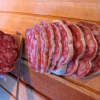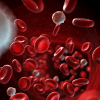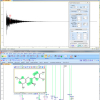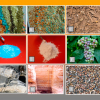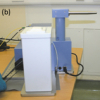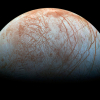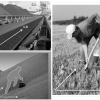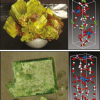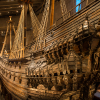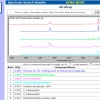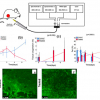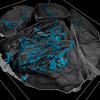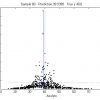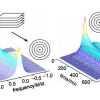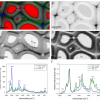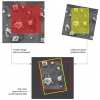Articles and Columns
Kim Esbensen and Claas Wagner continue their study of “Heterogeneity—the root of all evil” in the Sampling Column. We would be most interested to hear readers’ views on our new column. Representative sampling is essential for most analyses to be relevant, and the column will move from its early theoretical introduction to practical solutions. Readers interested in learning more about the Theory of Sampling may be interested in the Proceedings of the 7th World Conference on Sampling and Blending which are now freely available at http://www.impublications.com/wcsb7.
Research is under way as to the possibility of using high-precision isotopic analysis of metals in a biomedical context. The goal is to develop methods for medical diagnosis on the basis of isotopic analysis of mineral elements in biofluids, for diseases that can otherwise only be established at a later stage or via a more invasive method (e.g., a biopsy) and/or for prognosis purposes. Whilst this work is in a very early stage, it is known that various diseases have an influence on the uptake, metabolism and/or excretion of essential mineral elements and thus, can cause a difference in their isotopic composition in biofluids.
Tony Davies and Mohan Cashyap are concerned about your NMR data. When an article starts “On 10 October 2014 the impossible happened”, you will want to take note! Following the withdrawal of Agilent from the NMR business, Tony and Mohan consider three solutions to ensuring your NMR data is available now and into the future. If you have an NMR of any make, you will want to read this. Do remember that you can comment on the web version of the article.
In the new Sampling Column, Kim Esbensen and Claas Wagner tell us about hetergeneity and why it is everywhere and should always be considered when sampling. The next issue will see a second part looking at how to avoid the errors involved in sampling heterogeneous materials—and that is all of them!
“In vivo Raman spectroscopy of skin” is Paul Pudney’s topic. The skin is a most important part of our bodies. There is great interest in studying it to help understand the many skin diseases we are prone to, including cancer, to develop skin care products and, increasingly, as an alternative route to administer pharmaceuticals instead of through the gut. Raman spectroscopy is an excellent tool to study these, and has particular advantages in its ability to do so in vivo.
Christian Schröder tells us about “Mössbauer spectroscopy in astrobiology”. Iron is abundant in the Earth’s crust, as well as on Mars and is likely to be so also on Jupiter’s moon, Europa. Iron is important for life and may have played a role in the origin of life as an energy source and by providing mineral surfaces as a template for surface metabolism. Iron continues to be essential for almost all organisms as the functional centre of many proteins and enzymes. Mössbauer spectroscopy is a powerful tool to study iron-bearing solid substances and as such has applications in the search for life in other parts of our Solar System.
Sampling on important works of art is not possible and this is the main reason why only non-invasive techniques, such as MSI, are becoming increasingly popular to assist with undertaking conservation decisions.
Further introduction to the Theory of Sampling by Kim Esbensen and Claas Wagner
The “Application of Raman and photoluminescence spectroscopy for identification of uranium minerals in the environment” is described by Eric Faulques, Florian Massuyeau, Nataliya Kalashnyk and Dale Perry. Uranium forms a large number of compounds and complexes, and these are most helpful in the study of uranium, its chemistry and transport in the environment. Raman and photoluminescence spectroscopy provide complementary information and are powerful tools for direct speciation of uranium and identification of natural uranyl minerals relevant to the environment.
Yvonne Fors, Håkan Grudd, Anders Rindby and Lennart Bornmalm tell us about “X-ray fluorescence for cultural heritage: scanning biochemical fingerprints in archaeological shipwrecks”. Two outstanding examples of the preservation of wood are the warships Vasa, in Stockholm and the Mary Rose in Portsmouth and this article looks at the role XRF has played in the preservation of the wood of both ships.
Following on from the two recent articles on how the Cloud may be impacting the availability of scientific software delivery for spectroscopists, this article looks at what the wider commercial spectroscopy software providers have been doing in this area.
C. Burgess and J.P. Hammond outline the work that has been undertaken to modernise the spectroscopic General Chapters in the United States Pharmacopeia (USP).
“Optical spectroscopy in therapy response monitoring: an awakening giant” by Arja Kullaa, Surya Singh, Jopi Mikkonen and Arto Koistinen looks at the important advances made by optical spectroscopy techniques, such as diffuse optical spectroscopic imaging (DOSI), Raman, diffuse reflectance and fluorescence spectroscopy, in changing how cancer is managed in patients. The ability to repeatedly monitor tumour dynamics to see how effective a particular treatment has been has enormous potential for us all.
Peter Jenks seeks to show where it is important to check the CRM or RM you are using includes a clear statement of commutability, and when and where it can be largely ignored.
Jan Novotný, Karel Novotný, David Prochazka, Aleš Hrdlička and Jozef Kaiser tell us about “Two dimensional elemental mapping by laser-induced breakdown spectroscopy”. LIBS seems to be finding increasing applications and to be receiving interest by the instrument manufacturers at present. The article provides an introduction to the technique and goes on to show how it can be used for elemental mapping in materials analysis.
This is Tony’s last column for Spectroscopy Europe. It is explores an idea that he has been developing for over 30 years, although as Tony points out the story starts around 3500 years ago.
“Rheo-nuclear magnetic resonance spectroscopy: a versatile toolbox to investigate rheological phenomena in complex fluids” is Claudia Schmidt’s topic. Rheology is an important science, and NMR has a number of uses within it. However, challenges remain for the simultaneous measurement of rheological and NMR parameters.
In the Quality Matters column, Peter Jenks and John Hammond look “Into the future: changes to ISO 17025 and ISO Guide 34”. There is a lot happening at present around ISO/IEC 17025 and ISO Guide 34, which together provide the framework for the development and use of certified reference materials in analytical laboratories around the world. John reports from the recent 37th meeting of the Reference Material Committee of ISO (ISO/REMCO) and provides an update on the topic of “commutability”.
“Elucidating structural and compositional changes in plant tissues and single cells by Raman spectroscopic imaging” is the topic of the next article by Batirtze Prats Mateu, Barbara Stefke, Marie-Theres Hauser and Notburga Gierlinger. Understanding plant cells is important for the best use of plants in traditional and new applications. Raman spectroscopic imaging represents one of the best ways to unravel the molecular structure in the native environment of plant tissues.
Hans Lohninger and Johannes Ofner describe “Multisensor hyperspectral imaging as a versatile tool for image-based chemical structure determination”. They describe the features of a software package that allows the combined analysis of hyperspectral data from different imaging techniques. This multisensor approach providing complementary information has many advantages.

